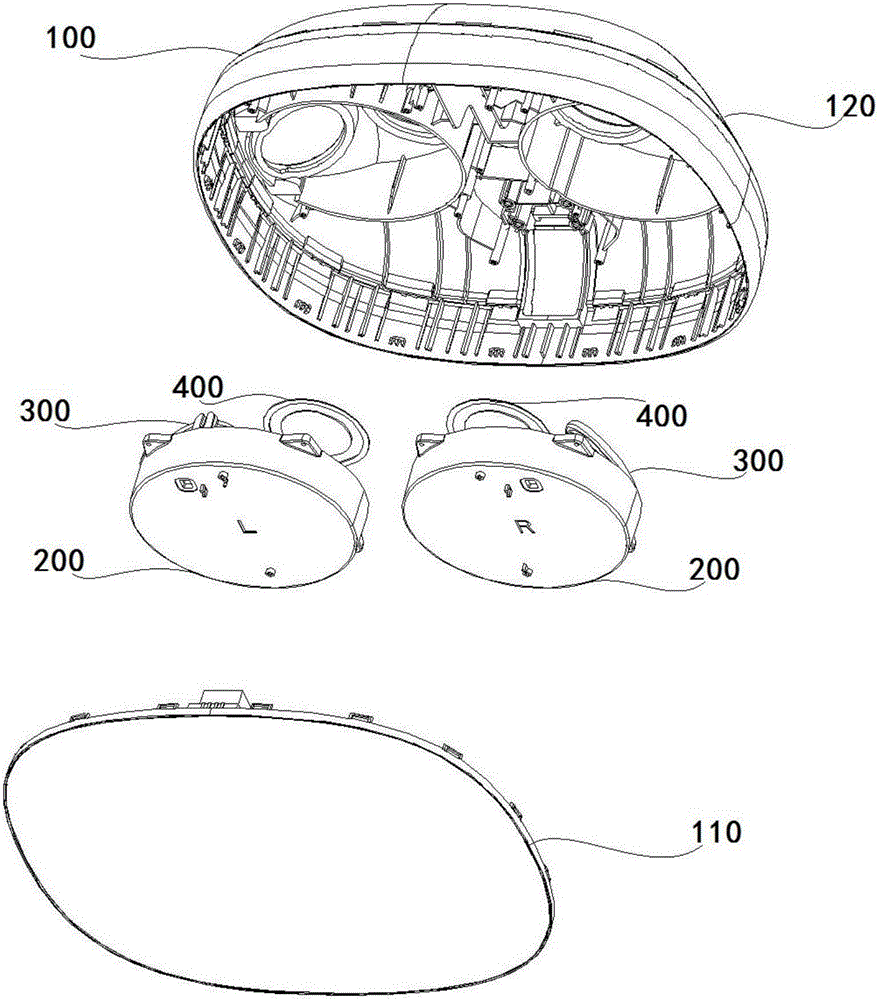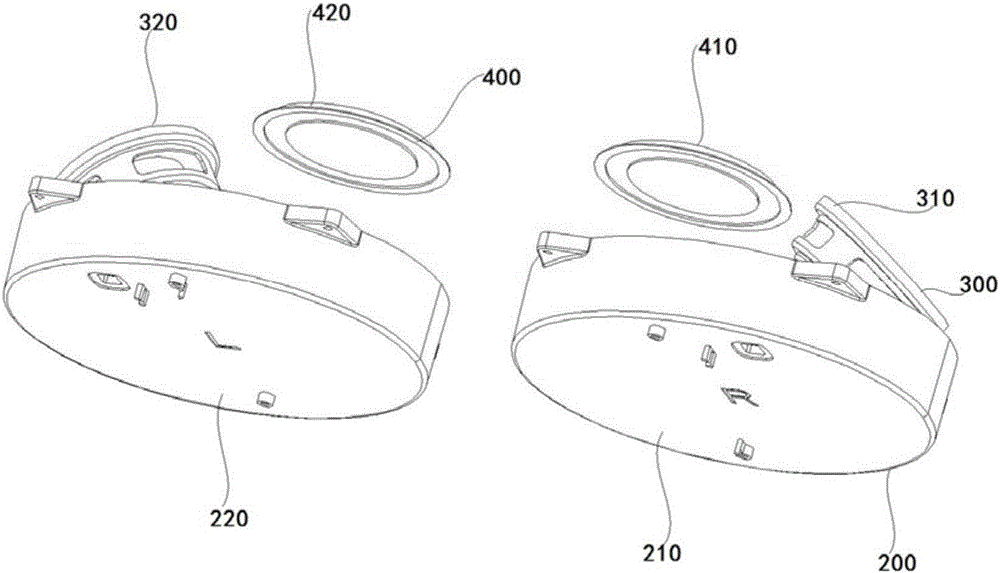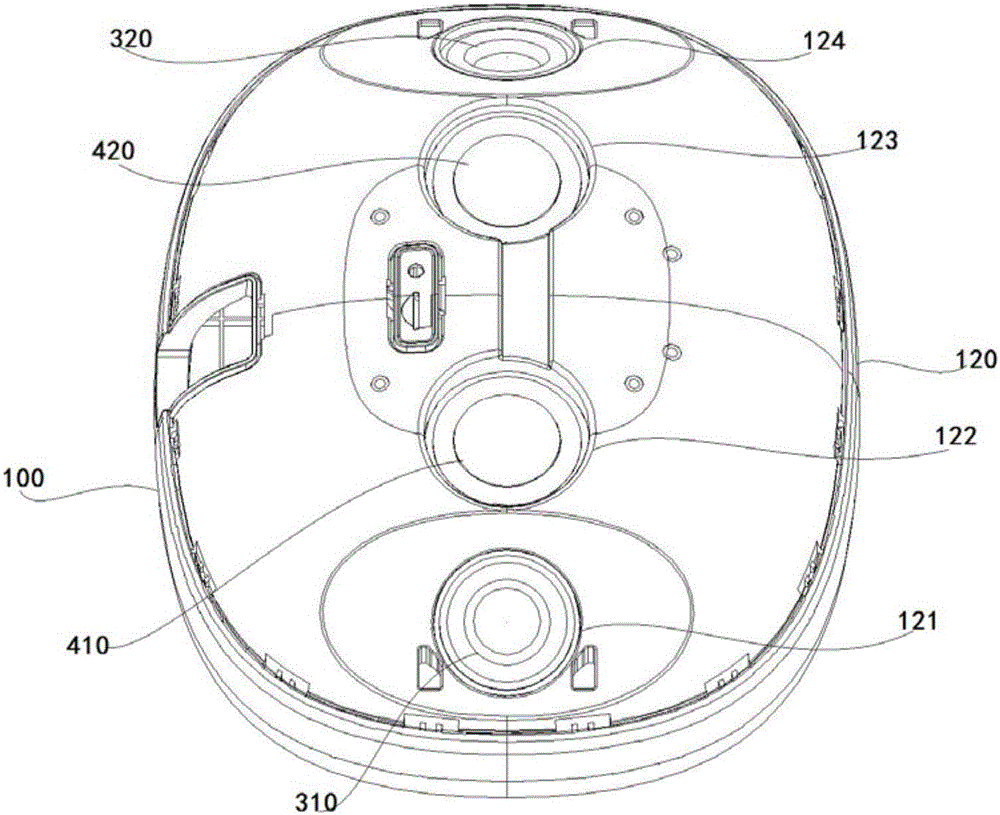Robot sound and robot
A robot and audio technology, applied in the field of heat conduction, can solve problems such as poor sound quality, inability to install speakers, and limited space for robots, and achieve the effects of enhancing sound brightness, enhancing stereo effects, and enhancing bass effects
- Summary
- Abstract
- Description
- Claims
- Application Information
AI Technical Summary
Problems solved by technology
Method used
Image
Examples
Embodiment 1
[0048] see figure 1 , figure 1 It is a structural schematic diagram of the robot sound system according to the embodiment of the present invention.
[0049] Such as figure 1 As shown, a robot audio system includes: a resonant cavity unit 200 , a speaker unit 300 and a passive diaphragm unit 400 . Wherein, the resonant sound cavity unit 200 is arranged inside the shell 100 of the robot, and the internal structure of the resonant sound cavity unit 200 is a closed cavity structure; The corresponding mechanical vibration drives the gas density in the resonant sound cavity unit 200 to change, and at least part of the structure of the speaker unit 300 is exposed on the surface of the housing 100; the passive diaphragm unit 400 is sealed and connected to the surface of the resonant sound cavity unit 200, and the The change of gas density in the cavity unit 200 generates mechanical vibration of the same frequency as the speaker unit 300 , and at least part of the structure of the p...
Embodiment 2
[0083] A robot, the robot includes a sound system, the sound system includes a robot sound, and the robot sound is the robot sound mentioned in Embodiment 1.
[0084] For robots using audio, a resonant sound cavity unit is arranged inside the robot shell, and a speaker unit and a passive diaphragm unit are arranged on the resonant sound cavity unit. The resonant sound cavity unit is constructed into a sealed structure. When the speaker unit generates mechanical vibration, it can Drive the air inside the resonant sound cavity unit to fluctuate. Since the resonant sound cavity unit is a sealed structure, the gas fluctuation inside it will directly act on the passive diaphragm unit, which will cause the passive diaphragm unit to produce mechanical vibration of the same frequency. The mechanical vibration of the diaphragm unit causes the surrounding gas to fluctuate and then generate sound waves with the same frequency as the mechanical frequency. Therefore, the passive diaphragm u...
PUM
 Login to View More
Login to View More Abstract
Description
Claims
Application Information
 Login to View More
Login to View More - R&D
- Intellectual Property
- Life Sciences
- Materials
- Tech Scout
- Unparalleled Data Quality
- Higher Quality Content
- 60% Fewer Hallucinations
Browse by: Latest US Patents, China's latest patents, Technical Efficacy Thesaurus, Application Domain, Technology Topic, Popular Technical Reports.
© 2025 PatSnap. All rights reserved.Legal|Privacy policy|Modern Slavery Act Transparency Statement|Sitemap|About US| Contact US: help@patsnap.com



